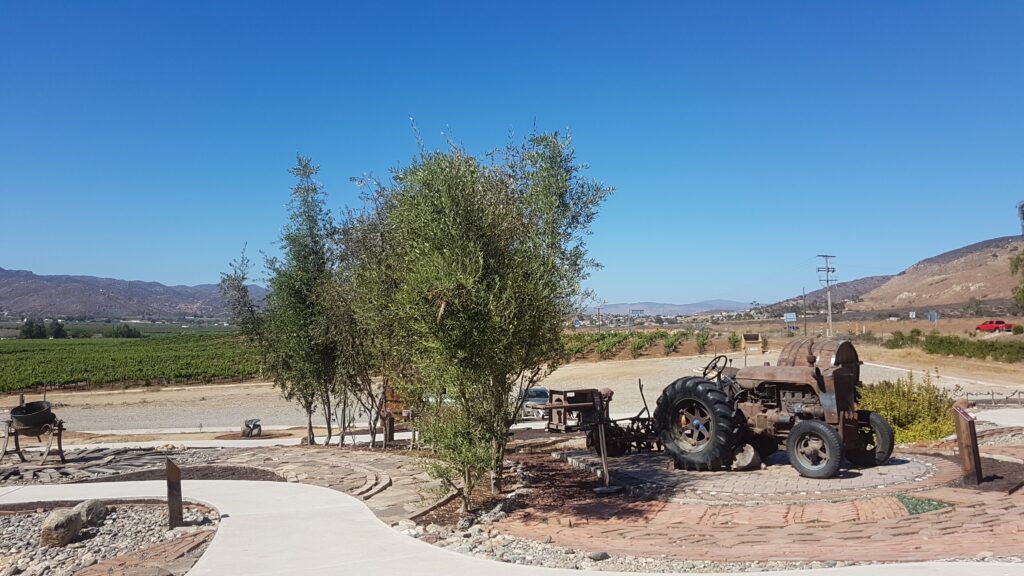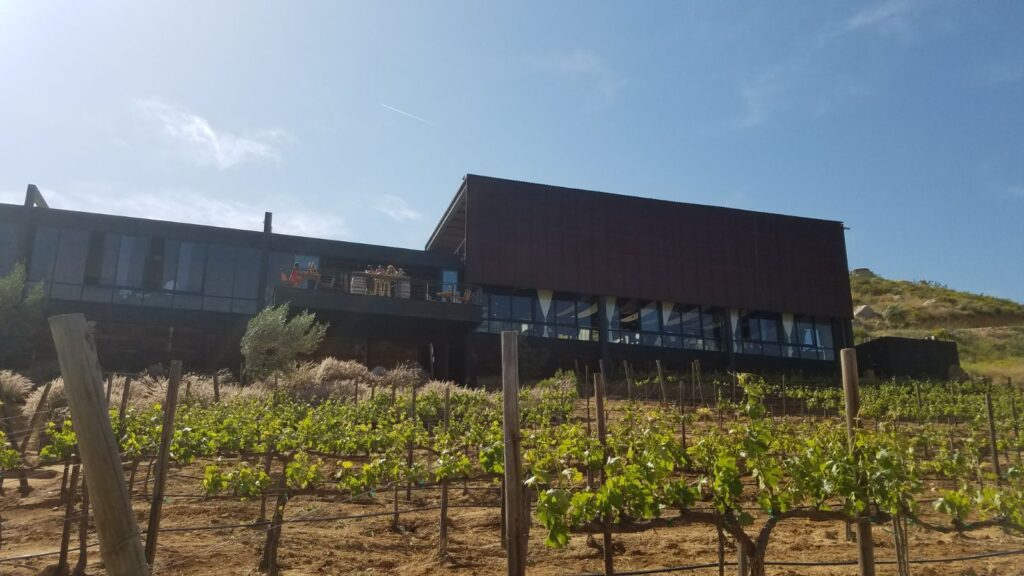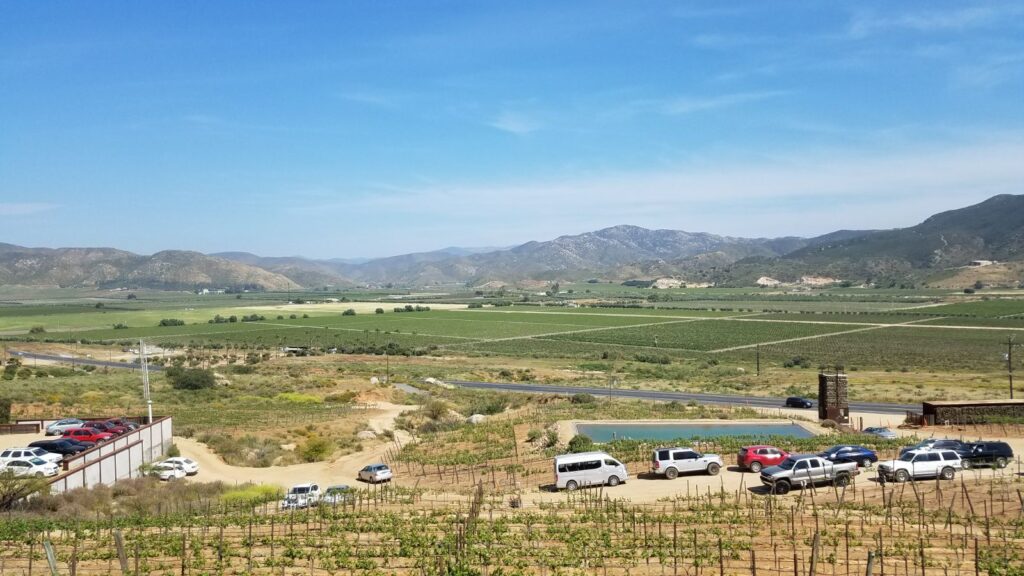Have you ever heard of Mexican Tuscany? Will you believe if I tell you that lucky San Diegans are only two hours away from tasting one of the best Mexican wines, strolling along Russian vineyards (whaat???), and having a romantic dinner aboard Titanic?
The best part of it all – the price, that is twice cheaper than going on wine tours in Temecula or Napa Valley in California. Mix of Mexican and Russian history with Di Caprio in it too? How is this possible? Well, continue reading and learn about wine in Mexico.
Brief history of wine
For 8 thousands years humans had enjoyed a one particular drink made of grapes – wine. The discovery of wine vases suggested that first drunk people lived around 6000 BC. The region between Georgia and Iran considered to be the cradle of the drink. From there wine traveled to Phoenicia (modern Lebanon), Egypt and then to other Mediterranean regions.
Georgia is OG of viticulture (cultivation and harvesting of grapes). The legend of Georgian land mother Saint Nina and archeological discoveries of Kvevries (big stone and later clay container) are the foundation of wine culture. In 4.000 BC wine arrived to Egypt, where at the time beer was popular drink. Its arrival made it popular among kings, priests, and high rank officials who popularized the custom and culture of wine drinking.
Around 2500 BC wine found its way to Greece and then to Romans. Hence both have similar gods: Bacchus and Dionysus.
Excessive drinking and debauchery generally accompanied the cult of Dionysus, giving rise to the word ‘bacchanalia’ for a party featuring drunken revelry. Initially Dionysus was often portrayed as a dignified, elderly man with a beard, and later as a beautiful, nude youth or as a small, fat man.
Rijksmuseum
Speaking about wine can’t avoid the mentioning of France. The presence of wine dates back to 6th century BC when the Greek arrived to the Southern Gaul, and later to Marseille. French Mediterranean shores appeared perfect for viticulture. Wine was the main drink at the party during Medieval times.
The Italian wine making tradition is also one of the oldest. It’s reputation as wine-producing region dates back to 5th century BC, when Greeks that were established in the south named the whole peninsula Entoria (Wine Land). The shore of the Tiber river came to be the international center of wine exchange – and because of it, the region was named Forum Vinarium. Nowadays there is no Italian region where they do not produce wine.
Museo de la Vid y el Vino

Offering an excerpt from the museum about wine in Spain.
Wine is closely linked to Spain’s culture and history. This is because the cultivation of the wine was introduced earlier than in other places, when the Iberian peninsula was under the control of Roman Empire. Wine consumption in Spain was mainly developed by ecclesiastical sectors which incorporated it as central part of the Holy Communion. With the discovery of the New World in 1492 Spain saw an opportunity to export its wine. Thereafter the cultivation of vineyards spread through missionaries and Spanish soldiers along the wild lands of America.
In 1521 the European wine drinking custom was brought to New World with the conquistador Hernan Cortez. In 1701 Juan de Ugarte brought wine to Baja California.
Mexican Tuscany.
Fortunate residents of Southern California (San Diego in particular) have it all: sunny climate, ocean till horizon, pristine beaches, snowy mounts, international cuisine, possibility to surf and to snowboard within the same day. It’s almost impossible to find something that will awe “spoiled” San Diegan. Although, not many people know that only two hours drive down south, one can find spectacular valleys that are known as Mexican Tuscany.
The conversation about Mexican wine starts with Guadalupe valley. As much as 90% (12.7 million bottles a year for local market) of all wine produced in the Mexico comes from Baja California and is exported to more than 30 countries (according to statistics in Museo de la Vid y el Vino). The Valle de Guadalupe is located only 70 miles south of the border and belongs to Ensenada municipality.
The Mexican highway 1D is comparable with famous U.S highway 1, if not more spectacular; the infrastructure is well developed (there are couple toll booths, so have change prepared), roads are in good conditions and it is safe to travel(!). Driving on the highway, it’s hard not to get distracted by immense mountains on the left and endless blue ocean on the right, cheerful sun reflections playing on the water and eye capturing views of the endless valley.

Besides dazzling scenery, traveler can indulge its taste into wine and food selection of the region. I recommend restaurant/hotel Encuentro which is hidden between two small mountains and has spectacular view on vineyards below. Besides eloquently decorated and delicious dishes, this place offers wine tasting, gift shop and can turn typical restaurant experience into romantic refuge from our mad world.
The region is also famous for Baja Med food, contemporary trend of “fusion cuisine of Mexican cuisine, such as chicharrón and cotija cheese, with those of Mediterranean, such as olive oil, and Asian cuisine, such as lemongrass” (from wikipedia). Along “Ruta del Vino” there are plenty of other wineries as well including Wine Museum, which I highly suggest, it’ll give you history of the beverage and the region, plus feeling of appreciation next time you leisurely sip glass of wine. For history geeks I suggest reading Black Legend of Borderland City article to learn more about the region.

Russian heritage in Baja California
So by now inquisitive reader is guessing, how are the Russians got their part in creating Mexican Tuscany, right? Well, in the beginning of 20’s century a small religious sect called “pryguny“ (jumpers) from the south of Russian Empire (Caucasian region) had been persecuted and was forced to immigrate. Mexico had become their new home.
Unfortunately, my country is infamous for religious intolerance (the most recent victim is Jehovah’s Witnesses). The immigrée settled in Baja California and started cultivating the land, like they did back home (at that time Russia was still predominantly agrarian country, therefore people had special love, appreciation, and connection to land). They were one of the pioneers to harvest the grapes and turn them into wine
I was lucky to meet the owner of Bibayoff winery – blue-eyed, gray haired, big foreheaded man with wide smile reminded me of my home. Sometimes destiny sets us to discover our own roots in the places we less expect. It was weird to talk to him in Spanish and hear his almost forgotten remains of Russian language. Nowadays traveler can enjoy several Russian museums and even taste authentic dishes at a restaurant nearby. Indeed, Mexican history has more ties to Russian than one might think.

I hope you’ve enjoyed my opus about treasures of Valle de Guadalupe and bits of Russian history. Hasta pronto!
-“…But wait a minute… didn’t you mention something about Di Caprio?”
-“Ahh… that’s right.”
The Rosarito Beach, a little town on the way to the Valle, had become for a very short time, world famous for hosting the most expensive movie at the time – Titanic. Now all memories of the filming had long gone, but visitor still can enjoy a lunch with not only spectacular ocean view, but have a chance to immerse into Titanic theme and for a minute pretend to be living as if it were 1912 at the Restaurant Bar El Galeon. A bit old, but still interesting article recalls little town’s hey-days.
I hope you, my dear reader learned something new and visit this beautiful Mexican Tuscany.

